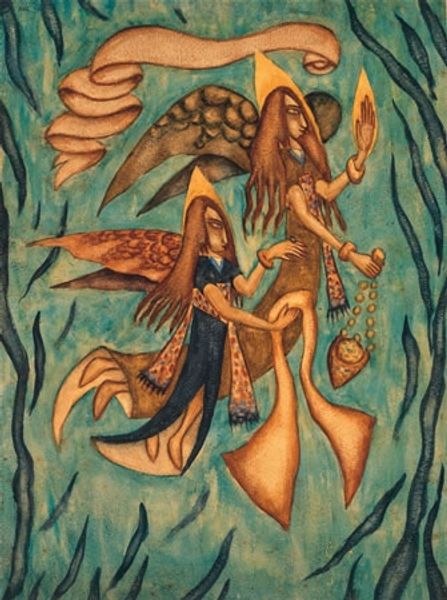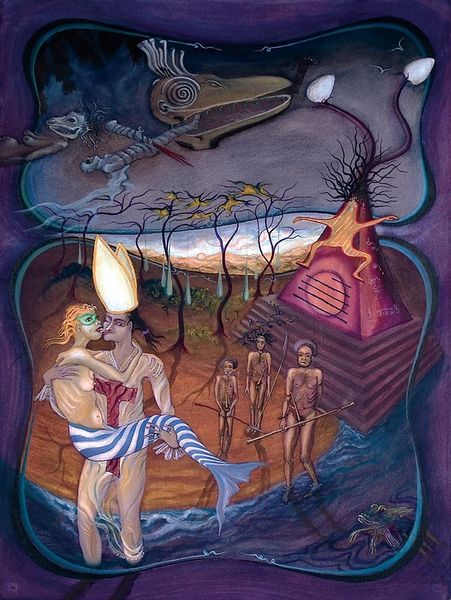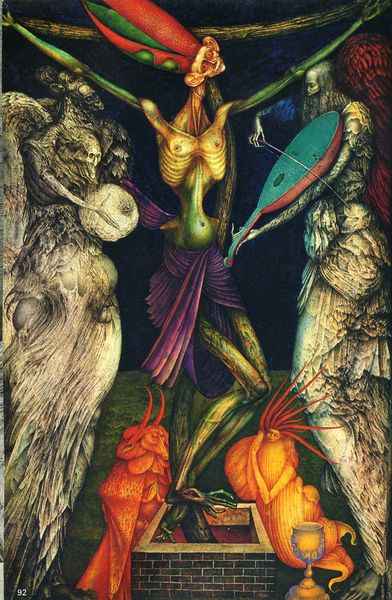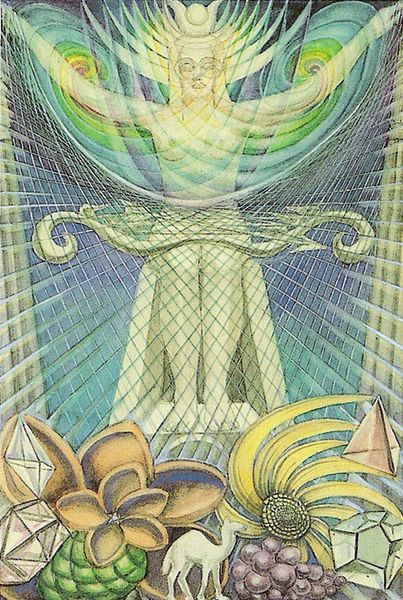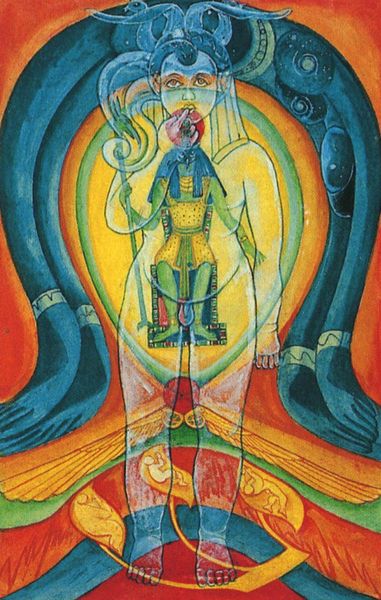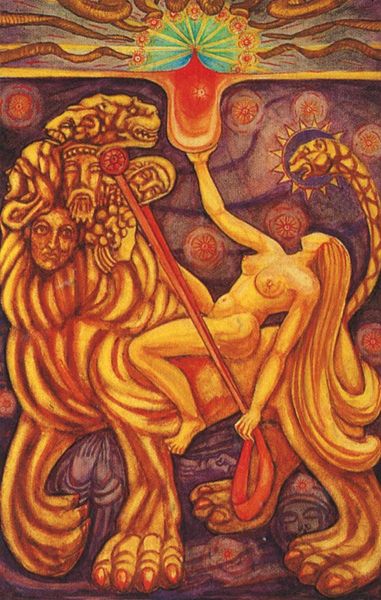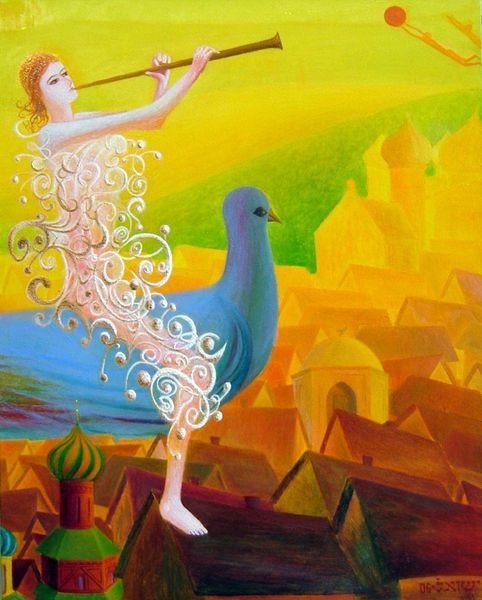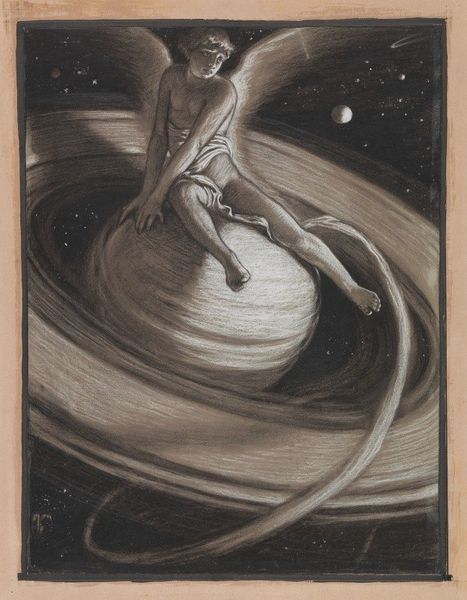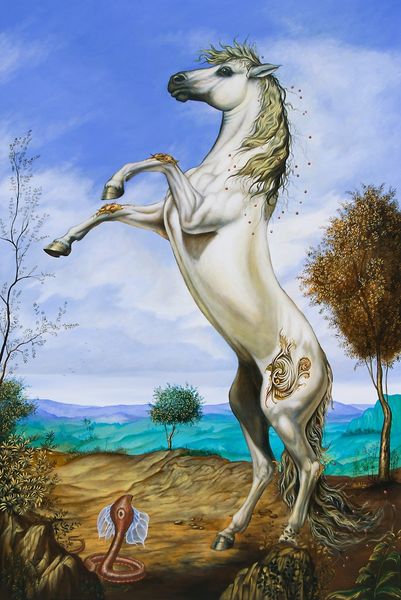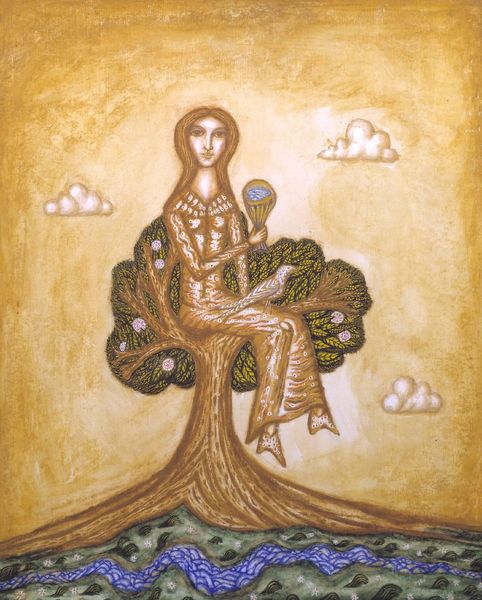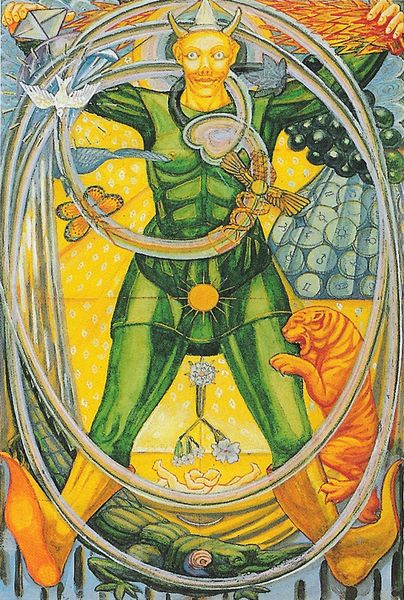
Dimensions: support: 760 x 506 mm frame: 915 x 660 x 63 mm
Copyright: © Tate | CC-BY-NC-ND 4.0 DEED, Photo: Tate
Curator: Cecil Collins created this piece, "The Poet," in 1941. The work, now held in the Tate Collection, presents a figure bathed in light, standing within an evocative landscape. What is your first impression? Editor: Immediately, I'm struck by the figure's vulnerability. The raw, almost wounded state of the poet seems so exposed, set against a backdrop that hints at broader social anxieties. Curator: Collins was deeply affected by the turmoil of his time. Viewing this through the lens of the Second World War, the poet could symbolize art's struggle for expression amidst destruction, with the beam of light representing hope or inspiration. Editor: I agree. But the figure's gender is unclear, allowing the viewer to project their own identity and experiences onto it. The poet embodies the universal struggle to make sense of chaos through art. Curator: It's the institutional and cultural context that makes the piece so very poignant, offering a sanctuary, a space for contemplation, during the bleakness of the war and its aftermath. Editor: Ultimately, "The Poet" invites us to consider the role of art in navigating personal and collective trauma. Curator: And in providing solace and perhaps, guidance, in a world grappling with uncertainty.
Comments
Join the conversation
Join millions of artists and users on Artera today and experience the ultimate creative platform.
tate 6 months ago
⋮
Throughout his life, Collins pursued his vision of a lost paradise, destroyed by the mechanisation of the modern world. Using archetypal figures, such as the Fool, the Angel and the Poet, he attempted to reveal our innermost selves. In this terrifying image the Poet tries to break free from the geometric construction which surrounds him. At the same time he is being blinded by the sun. The burning city in the background is a reference to Collin’s native city of Plymouth which was bombed in 1940, one year before this painting. Gallery label, September 2004
